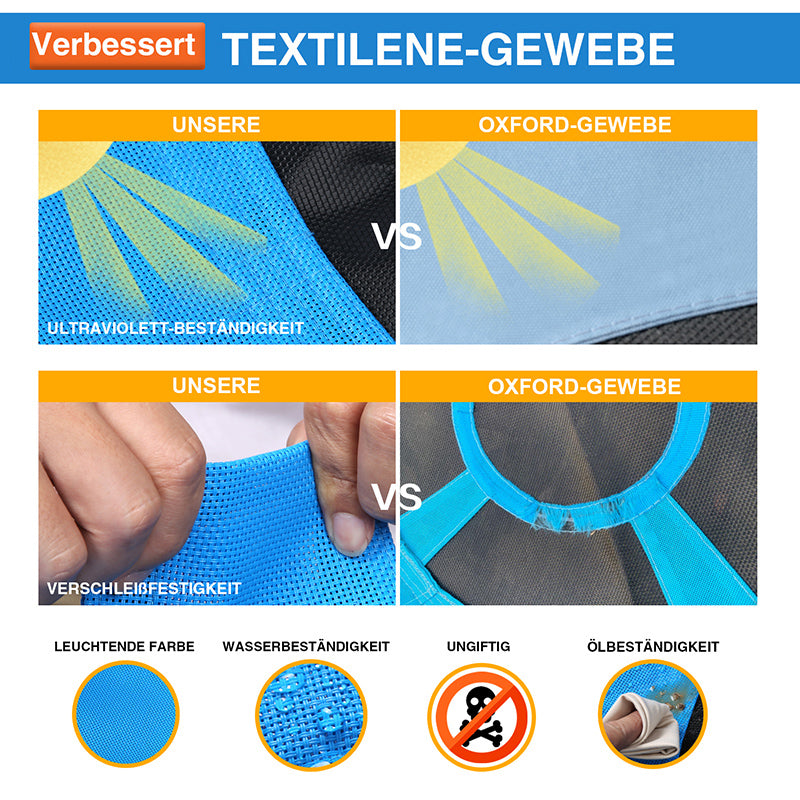What is Textilene?
- Textilene is a highly tear-resistant, flexible fabric that is particularly impressive in the garden furniture sector due to its high level of comfort and a pleasantly cool feeling when sitting and lying down, even at high temperatures.
- The fabric is made from a synthetic fiber that is coated with PVC. The material is extremely flexible and stable at the same time. This composition also makes Textilene water-repellent and quick-drying. The fabric is therefore considered to be extremely easy to care for and durable, as mildew and mold have almost no chance here.
- Scan textile swing
How do I clean Textilene?
- Textilene is UV-stabilized, which means it is covered with a protective layer that ensures that the material does not quickly fade and lose color. You should therefore only use mild soapy water and water when cleaning so as not to damage this protective layer. Use a damp cloth or sponge to clean Textilene.
- You can also use a garden hose to hose down your patio furniture. To do this, only open the hose slightly - the gentler the jet, the gentler the cleaning is on the covering.
- Danger! Do not use a high-pressure cleaner as the water pressure is far too high and the fibers of the covering could tear.
- For stubborn dirt such as tree resin and bird droppings, we recommend special Textilene cleaners that do not damage the UV stabilizers and do not limit the tear resistance of the fabric.
What is 900D Oxford?
- 900D Oxford fabric is a heavyweight polyester fabric, it is a stronger, heavier alternative to 600 denier fabric.
- 900D is a durable 900 X 900 denier polyester fabric. It has a 510g polyurethane backing and is durable
- Water-repellent finish, both adding to the versatility of the fabric. These features make 900D a great one
- Now some of Autojoyde's swings are made from this material.
- 900D Oxford swing scan
The contrast of Textilene and Oxford




